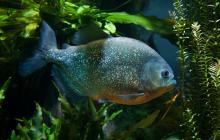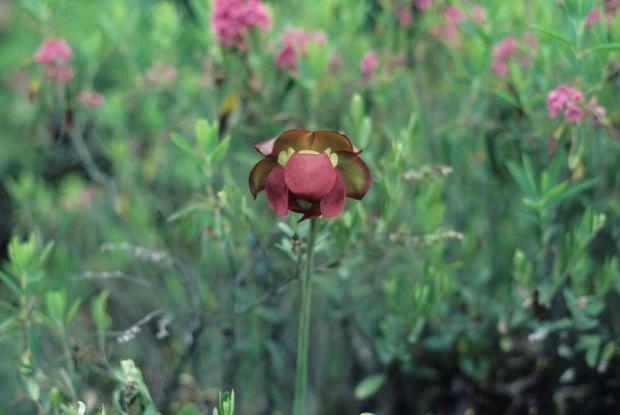English
More than what they eat, it is how carnivorous plants capture their prey that people find so fascinating. This article is based on a classification of traps by the botanist Francis Ernest Lloyd (1942) that is still used today.
Passive traps
Passive traps do not move in any way to attract prey. They fall into three main type:
- Pitfall traps are the simplest. The leaves are modified into a pitcher containing a liquid medium that digests the victim. Insects are attracted by the nectar around the neck of the pitcher and often by its bright colour. Once they reach the bottom of the pit, it is almost impossible to escape. A well-known plant in Quebec peat bogs, the purple pitcher plant (Sarracenia purpurea), depends on this type of trap, as do the lovely Nepenthes, or monkey cups, that grow in the tropics.
- Lobster-pot traps are a bit like pitfall traps, in that it is easy for victims to get in but impossible to get out. Sarracenia psittacina, for example, has tube-shaped leaves closed at the bottom. The inside of the leaf is covered with long downward-facing hairs that together act like a one-way valve that opens only inward. Any insect that makes its way inside the tube can only go deeper.
- Passive flypaper traps have glands that secrete a sticky substance that ensnares insects when they alight. The Australian genus Byblis is a good example of this kind of trap.
Active traps
Active traps capture their prey or facilitate digestion by moving in some way.
- Active flypaper traps, like passive ones, secrete a sticky substance to entrap insects. In this case, however, the leaf edges close up around the prey once it is caught. The movement occurs too slowly to play any role in capturing the victim, but it prevents the loss of liquid nutrients during digestion and accelerates the process by moving the insect toward the centre of the leaf. Two genera have this kind of trap, and each one is represented in Québec: sundews (Drosera) and butterworts (Pinguicula).
- Snap traps are the kind used by the most famous of all carnivorous plants, Venus flytrap (Dionaea muscipula), found mainly in North Carolina. The two-lobed leaf closes like a set of jaws, often very quickly. The teeth on the leaf margin add to the analogy, making the plant even scarier looking. They help limit the possibility of escape. The trap is triggered when a victim touches the sensitive hairs inside the leaf. An aquatic plant, Aldrovanda vesiculosa, also has a similar but less showy trap.
- While snap traps are the best known, bladder traps are certainly the most sophisticated. They are used by aquatic plants, and consist of small compressed “bladders,” with a trap door triggered when the prey touches the long trigger hairs around the door. When the door opens, water rushes inside, sucking the animal inside the bladder. This system is used by the genus Utricularia, with many members in Québec, among other plants.
Reference: Lloyd, F.E. The Carnivorous Plants, Mass., Chronica Botanica Company, 1942, 352 p.






